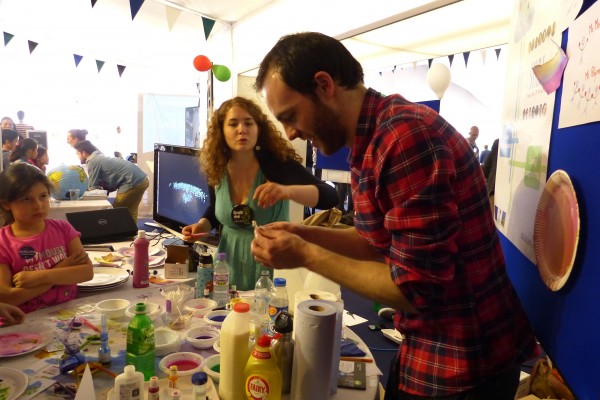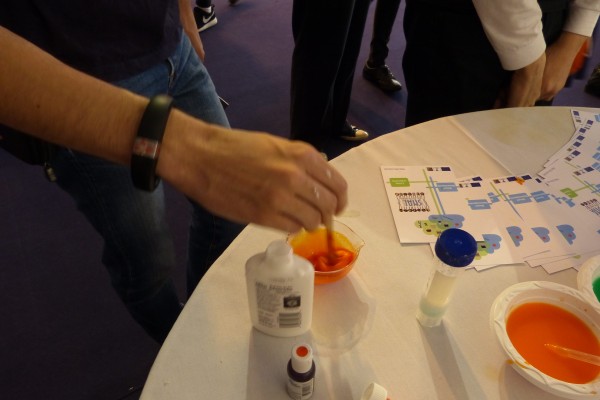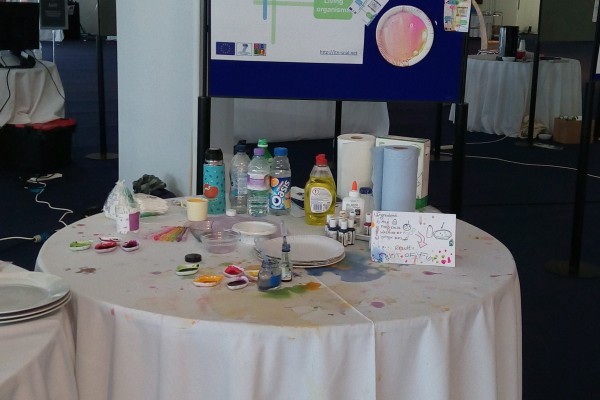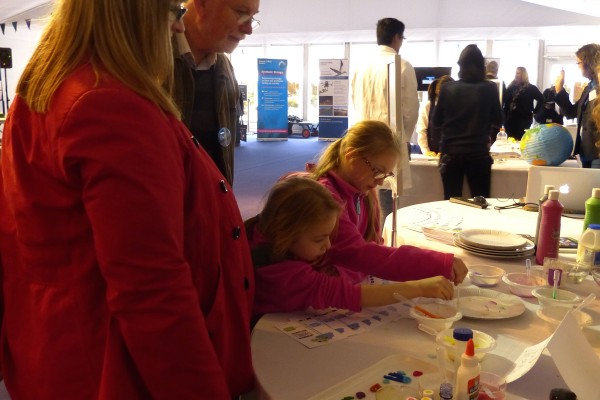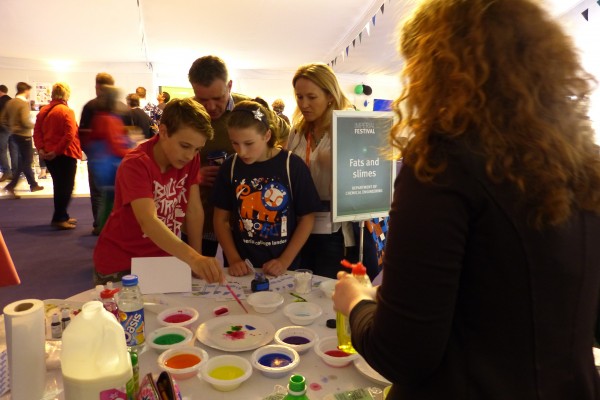Discover why a ‘split personality’ makes fat molecules key to life, and play with a sticky polymer slime you can make at home.
As members of SNAL we couldn’t miss this wonderful opportunity to share with the public some of the fundamental topics of the research of our network, by presenting two easy and fun experiments:
Polimer’s slime
The experiment named polymer slimes involves making polymers by white glue and detergent solution. In the experiment, laundry detergent is dissolved in water and then poured onto white glue. The mixture is mixed thoroughly and polymers form in minutes. The polymers generated are, at first, a bit sticky. After several minutes, it becomes elastic and bouncy, like ‘slimes’. If food colours are added from the first step, polymer ‘slimes’ will be colourful, thus more attracting. The polymers generated in this experiment, in fact, are polyvinyl acetate, which are widely used for preparation of various glues. In the experiment, detergents change the solubility of polyvinyl acetate in the mixture solution. As a result, it precipitates out as bulky polymer. If food colours are added, the colour molecule will be incorporated into polymer material themselves, thus making the polymers colourful. All materials used in this experiment are household items, which are very common and safe. By introducing the interesting polymer ‘slimes’ to our audience, we hope they could enjoy the fun of it and become interested in polymer study.
Fats’ split personality
The aim of this experiment is to demonstrate one of the key properties of fat which makes it a vital biomolecule for life. The ability of fat molecules (lipids) to spontaneously self-assemble in water provides the structural basis for the membranes which surround biological cells, the building blocks of all living organisms. The key characteristic of fat molecules which gives rise to this ability to self-assemble is the contrasting interactions of different parts of the fat molecule with water (‘split personality’). Specifically a water loving “head” region at one end and a water hating “tail” region at the other. The experiment will demonstrate this crucial property of fat by an effect visible to the naked eye: first, a small drop of food colouring or ink is gently added to a dish of milk, resulting in a small, concentrated patch of colour. The tip of a cotton bud is then loaded with washing up liquid. When the cotton bud tip is placed on the surface of the milk, near to the drop of colour, the colour rapidly spreads out, away from the cotton bud as the soap mixes and interacts with the milk. By changing the initial positions of the drops of colour in the milk and touching the cotton bud at different points on the milk surface, complex patterns can be produced which should encourage involvement and creativity. In addition people were able to take home the patterns that they create by transferring them to pieces of card. This experiment is very easy to perform and uses no special equipment or materials. It is therefore something that people attending the festival could very easily reproduce at home to impress family and friends.
Something more: Alongside this simple experiment, a computer simulation is played to illustrate what is going on at a molecular level to give rise to the striking macroscopic effects seen in the experiment. This enabled people to relate the common structural characteristics of individual fat molecules to the surprising behaviour they were observing.
Along with the fun, all the visitors have the chance to get insight into the SNAL multidisciplinary environment and into our mission!
A special thanks to our colleagues in Imperial College (Marie Bachelet, James Carter, Siyuan Chen, Michal Kopytynski) and our supervisors (Fernando Bresme, Rongjun Chen, John Seddon) who helped a lot in the planning and development of this project!
See you next year!!!
- Influence of a pH-sensitive polymer on the structure of monoolein cubosomes - 05/01/2018
- pH-Responsive, Lysine-Based, Hyperbranched Polymers Mimicking Endosomolytic Cell-Penetrating Peptides for Efficient Intracellular Delivery - 09/05/2017
- Membrane-Anchoring, Comb-Like Pseudopeptides for Efficient, pH-Mediated Membrane Destabilization and Intracellular Delivery - 27/02/2017







